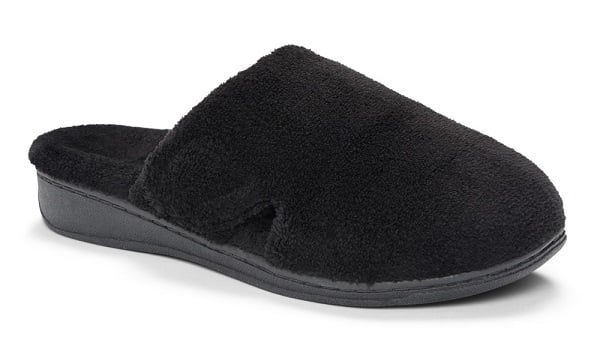
Many people will experience some form of inside ankle pain throughout their lives. Inside ankle pain can be caused by sprains, stress fractures, arthritis, and more. We don’t want to let inner ankle pain prevent you from wearing your favorite beach shoes or comfortable sandals.
Unfortunately, this pain may also be a result of posterior tibial tendonitis, a condition that causes the posterior tibial tendon—which connects one of the calf muscles to bones located on the inner foot—to experience inflammation or tearing.
muscles to bones located on the inner foot—to experience inflammation or tearing.
Are you experiencing chronic ankle pain and worried you may be suffering from posterior tibial tendonitis? It’s important to understand what kind of symptoms are exhibited from this type of ankle tendonitis because pain can also be the result of an ankle sprain or fracture.
In this guide, we’ll explore treatment options for this specific inside ankle pain as well as its causes and symptoms. We’ll also look into preventative measures you can take to protect your hard-working ankles. Let’s discuss.
Wondering How to Treat Inside Ankle Pain?
Did you know that your ankle bears 150 percent of your weight when you walk?1 Now you know why a sprained ankle is a common occurrence!
Ankles twist, bend, rotate and hold us up so that we can tackle major feats like marathon running and competitive high jumping.
Inside ankle pain is different from peroneal tendonitis so if you think you may be suffering from posterior tibial tendonitis, you’ll want to get checked out by your friendly local podiatrist right away.
This is because—although you may have never heard of it before—the posterior tibial tendon is “one of the most important tendons in your lower extremities,” making it possible for you to point your foot in several directions.2
Posterior Tibial Tendonitis Treatment
After conducting an exam (which may include imaging tests) to rule out other possible causes of chronic ankle pain, your doctor will generally suggest starting with non-surgical treatments.
Non-surgical treatments for the tibialis posterior tendon include:
- RICE therapy – Rest, Ice, Compression, Elevation. It sounds simple, but keeping off of your injured foot or feet is the easiest way to start the healing process. You may also want to take anti-inflammatory medication—like Ibuprofen—to reduce swelling.
- Physical therapy – Depending on the severity of your condition, your doctor may suggest you undergo physical therapy. Your physical therapist will lead you through a series of strengthening exercises that can help relieve foot pain and expedite the healing process.
- Wearing supportive shoes – Wearing orthotic shoes or shoes with ample arch support can help reduce pressure on an injured tendon. Here at Vionic, we produce stylish and comfortable orthotic sandals and flip flops, so you can treat your condition even while casually walking poolside.3
- Practicing regular stretching – Once you’ve injured your posterior tibial tendon, you’ll want to incorporate some regular calf and foot stretches into your routine once it’s been approved by your doctor. There are various programs available online that you can follow, specifically designed to help those who are suffering from this condition.
- One such program—created by doctors and physical therapists at the University of Tennessee College of Medicine—has two phases to follow.4 The first addresses basic muscular endurance with seated sole-to-sole and theraband exercises while the second incorporates single-leg heel raises, toe walking, and balance work.
If all non-surgical options have been exhausted and you’re still in moderate to severe foot pain, you and your doctor may start to discuss a more aggressive treatment plan.
Posterior Tibial Tendonitis Surgery5
If you and your doctor decide surgery is the best option, the next step is prepping for the procedure.
Like with any surgery, you’ll want to share your entire medical history—including past surgeries and what current medication you’re on—with your doctor. You’ll also want to create a post-op plan for yourself, especially if you live alone or have to walk up flights of stairs to your apartment. The more you can allow your inner ankle to rest post-op, the faster you could heal.
There are various ways to perform this kind of surgery, so be sure to get all the pertinent details from your doctor before you go under.
During the surgery, which typically lasts two or more hours, your doctor will make an incision through the muscle of your lower calf or through the sheath that surrounds the tendon, removing or repairing the damaged parts of your tendon.
In post-surgery, you’ll be monitored for a few hours, but you’ll probably be able to go home the same day. Your doctor will likely prescribe you some medicine to reduce swelling and inner ankle pain, and you’ll need to keep your leg raised in a splint with crutches.
Posterior Tibial Tendonitis Causes + Symptoms
Even if you don’t have to undergo surgery for your inside ankle pain, you probably don’t want to have to undergo the non-surgical treatment options, either.
Posterior tibial tendonitis is a common injury for people who play sports, dancers, and gymnasts, as well as anyone with a particularly active lifestyle. A pinched nerve in your foot can also be common for these active lifestyles. It can be difficult to take time off from these activities, especially if they’re your passion.
To that end, understanding the causes and symptoms of posterior tibial tendonitis can help you avoid injuring this all-important tendon in the first place. Let’s break it down.
Causes
There are various reasons why your posterior tibial tendon may have become inflamed or torn.
This includes everything from overuse to a lack of healthy blood supply to the area. Women over the age of 40, overweight people, and those diagnosed with diabetes or high blood pressure are at risk of developing this kind of inside ankle pain.2
Avid runners are also particularly at risk of developing this form of ankle pain, especially if they are running on old shoes or if their form is sloppy. The reason people develop this tendonitis could be due to wear and tear over time or could stem from a specific hard fall or injury. Additionally, plantar fasciitis affects many runners or people with active lifestyles. Similarly to inside ankle pain, it can be discouraging to wonder, “does plantar fasciitis go away?”
The problem with posterior tibial tendonitis is that if not addressed, the condition typically worsens, sometimes—in extreme cases—even resulting in the collapsing of the foot’s arch.

Symptoms
You may be suffering from posterior tibial tendonitis if you are experiencing any of the following:4
- Sharp pains along the inner part of your foot or ankle, sometimes extending up into your shin
- Visible inflammation along the tendon
- Stiffness in your ankle joint
- A popping sensation
- The area is sore to the touch
One way to test if you’re experiencing this particular condition is to do the single-leg heel raise.4
This involves standing on the hurt foot with your knee locked straight. Use your calf muscles to rise up onto your tiptoes, locking your ankle at the top.
Does this cause your inside ankle to throb? Then you may have posterior tibial tendonitis.
Many people will choose to continue with their regular activities and “push through the pain.” Again, the problem with this condition is that it worsens over time, and the only solution is to take time off of your feet.
Preventing Inside Ankle Pain
While posterior tibial tendonitis is treatable, it’s best to try and avoid injuring this very important tendon. Luckily, there are actionable ways to prevent inside ankle pain.
Here, we explore three effective preventative measures you can start taking today:
#1 See a Sports Medicine Doctor
As we’ve detailed, people who are extremely active or participate in a variety of sports are particularly prone to developing inside ankle pain.
Scheduling an appointment with a sports medicine doctor before the peak season of your activities is important in ensuring your conditioning and form are in order.
If you have high arches or flat feet, these doctors can also recommend the right orthotic shoes to prevent injury.
#2 Get Fitted for the Right Shoes
Wearing proper footwear is just as important for triathletes as it is for everyday people heading into their 9-to-5. At Vionic, we’ve developed the best looking—and best feeling—orthotic slippers and sandals made with Vio-Motion™ footbed technology.

These shoes support your delicate arches and the tendons around your ankle so you can rest easy knowing you’re not subjecting these hard-working body parts to overuse. We also make top-of-the-line sneakers for casual runners and competitive athletes alike.
Take the Women’s Tokyo Sneaker, for instance. These active sneakers feature advanced motion system technology, combining an orthotic insert with a cushioned outsole and lightweight upper. Made with a removable textile-covered EVA orthotic insert, these durable, flexible shoes are sleek and stylish—you’d never know they’re vetted by podiatrists.
Remember, when it comes to foot health, the right shoes can make all the difference. From ankle boots with arch support to alignment-promoting recovery sandals, Vionic shoes are carefully designed to provide the greatest support possible and minimize foot pain.
#3 Get Serious About Stretching
Practicing regular stretching and strengthening exercises can help your ankle recover from posterior tibial tendonitis, but incorporating stretches into your daily routine can also help prevent injury.
Some stretches to help you prevent inside ankle pain include:4
- Calf stretches against a wall
- Inversion, eversion, and dorsiflexion exercises with a Theraband (resistance band)
- Single heel raises
- Toe walking
Regularly foam rolling your calves can also help loosen your muscles and reduce stress on your posterior tibial tendon.
Avoid Foot and Ankle Pain with Vionic
Inside ankle pain can be frustrating at best and debilitating at worst. If you think you’re experiencing symptoms of posterior tibial tendonitis, you’ll want to schedule an appointment with your podiatrist as soon as possible.
While there are several non-surgical treatment options available to you, you likely want to avoid having to deal with this pain altogether. Practicing regular preventive measures like stretching, maintaining good form when exercising, and wearing the proper shoes can help you keep your ankles strong and healthy.
Some people may associate orthotic shoes with the bulky, boring models our grandparents wore. But shoes built with high-tech three-zone comfort and ultimate arch support have been upgraded for the 21st century. In simpler words: they’re sexier.
With Vionic, choose stylish slippers, sneakers, sandals, and more, all approved by the American Podiatric Medical Association. We hope this guide helped you identify (or consider) a path forward to treating your inside ankle pain.
Sources:
- Hamed Jafary. “7 Causes of Inner Ankle Pain Revealed!”. Foot Ankle Institute. Updated Nov 11, 2020, https://www.footankleinstitute.com/blog/7-causes-of-inner-ankle-pain/
- “What is Posterior Tibial Tendonitis?”. Cincinnati Foot and Ankle Care. March 6, 2020, https://www.cfac.net/2020/03/06/what-is-posterior-tibial-tendonitis/
- “Orthotic Sandals & Flip Flops”. Vionic Shoes. https://www.vionicshoes.com/orthotic-sandals
- John Davis. “4 Ways to Prevent and Treat Posterior Tibial Tendonitis”. Runners Connect. https://runnersconnect.net/posterior-tibial-tendonitis/
- “Posterior Tibialis Tendon Surgery”. Johns Hopkins Medicine. https://www.hopkinsmedicine.org/health/treatment-tests-and-therapies/posterior-tibialis-tendon-surgery


Leave a Reply